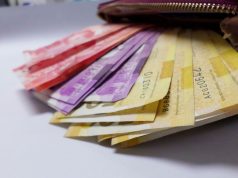More Filipinos going cashless

MAJORITY OF Filipinos are now eager to pay electronically, Visa, Inc. said in a report, even as it flagged concerns on connectivity and infrastructure.
In a press briefing on Thursday, Visa said 69% of the Filipinos it surveyed expressed confidence go cashless in a day, data from the 2017 Visa Consumer Payment Attitudes Study revealed.
The survey added that 70% of respondents have gone cashless for at least a few days, citing convenience and safety as primary concerns.
“Filipinos are seeing the benefits of electronic payments in their lives, and this leads to a change in behavior where they become confident in leading a digital lifestyle,” Stuart Tomlinson, Visa country manager for the Philippines and Guam, was quoted as saying in a statement.
Visa conducted the study online with 500 respondents whose monthly income is at least P12,000. 45% of which resides in Metro Manila, while the rest lives in key urban centers nationwide.
The study also revealed that 92% of the respondents are now shopping online, a surge from the 71% in last year’s report. Of the 500 respondents, 66% indicated that they shop online at least once a month.
Utility bills or fines was one of the top dues paid online at 59%. This was followed by expenses in fashion, travel and beauty products at 43%, 40% and 36%, respectively.
According to the research, 65% of respondents said they check their bank accounts online once a week rather than going to a physical branch.
But amid growing confidence on and usage of electronic payments, Visa said connectivity issues continue to hound the growth of digital payments in the country.
“We have challenges obviously with the interoperability and the connectivity of the telecom networks. Those are what we call infrastructure challenges,” Mr. Tomlinson said in the press briefing, adding these issues are now being addressed by other sectors.
In the 2016 Consumer Payment Attitudes survey, 57% of respondents preferred electronic payments as opposed to cash from the 46% logged the previous year.
Despite an apparent growing preference for digital payments, the Bangko Sentral ng Pilipinas (BSP) said majority of Filipinos still do not have bank accounts as they are unable to meet the required minimum balances.
In the latest Financial Inclusion Survey of the BSP, 22.6% or some 15.8 million Filipino adults maintained formal bank accounts as of last year, an improvement from the 22% in 2015 when the survey was last conducted.
The BSP launched the National Retail Payment System framework in 2015 with the objective of promoting a “cash-lite” economy wherein financial transactions will veer away from cash and check and toward electronic fund transfers and digital wallets. — Karl Angelo N. Vidal



